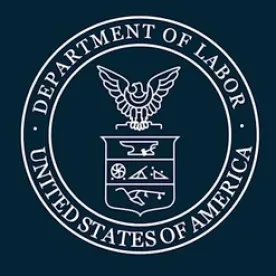On July 20, 2020, the Wage and Hour Division (“WHD”) of the U.S. Department of Labor (“DOL”) published new guidance for businesses reopening amid the COVID-19 pandemic. The guidance is in the form of additions to the WHD’s existing Frequently Asked Questions (“FAQs” or “Guidance”) and addresses issues arising under two leave laws—the Family and Medical Leave Act (“FMLA”), and the Families First Coronavirus Response Act (“FFCRA”)—and wage and hour matters governed by the Fair Labor Standards Act (“FLSA”).
New FMLA FAQs
The WHD added the following two FAQs to its Guidance on the FMLA.
-
FAQ #12: In light of the surge in the use of telemedicine during the pandemic for health issues both related and unrelated to COVID-19, this new FAQ addresses the question: “Will a telemedicine visit count as an in-person visit to establish a serious health condition under the FMLA?” The answer is, “Yes,” but only temporarily and only if certain conditions are met. Specifically, until December 31, 2020, the WHD will treat telemedicine visits as equivalent to in-person visits if the telemedicine visit includes “an examination, evaluation, or treatment by a health care provider;” the visit is performed by video conference; and the process is “permitted and accepted by state licensing authorities.” Additionally, for purposes of establishing a serious health condition, the WHD will accept electronic signatures.
-
FAQ #13 concerns whether an employer may require an employee returning from FMLA leave unrelated to COVID-19 to be tested for COVID-19 as a condition of returning to the workplace. According to the Guidance, the FMLA does not prohibit such a testing mandate, as long as it is applied in a non-discriminatory manner, e.g., the employer’s policy requires all returning employees to get tested for the virus, regardless of the reason for their absence, before they may enter the workplace.
The WHD stresses, however, that employers should be careful not to run afoul of other laws that may be implicated by such testing, most notably, the Americans with Disabilities Act (“ADA”). As we previously reported, the latest guidance from the Equal Employment Opportunity Commission advises that employers may conduct diagnostic COVID-19 testing, so long as it is performed in a nondiscriminatory manner and the employer ensures that the test is “accurate and reliable.” On the other hand, employers may not conduct antibody testing, because to date, such tests are not sufficiently accurate or reliable.
New FFCRA FAQs
The four newly added FAQs on the FFCRA provide the following guidance.
-
FAQ #94: Generally, an employee returning from a FFCRA leave must be reinstated to the same or an equivalent position, but the WHD will allow an exception for employees who took the leave to care for a relative with COVID-19 or its symptoms. Where an employer reasonably is concerned that a returning employee may have been infected with the virus while caring for his or her relative, the Guidance advises that the employer may temporarily require the employee to telework, if feasible, or temporarily place the employee in “an equivalent position requiring less interaction with co-workers.”
Notably, the WHD expressly approves a company policy that requires “any employee who knows he has interacted with a COVID-infected person to telework or take leave until he has personally tested negative for COVID-19 infection, regardless of whether he has taken any kind of leave.” However, an employer may not require an employee to telework or be tested for COVID-19 simply because the employee took leave under the FFCRA.
-
FAQ #95: An employee who used his or her full two-week allotment of FFCRA paid sick leave prior to being furloughed is not entitled to any additional FFCRA leave upon returning to work. If, however, the employee had used only part of the benefit, e.g., 40 hours, the employee would have 40 remaining hours of FFCRA paid sick leave available for a qualifying reason upon his or her return to work following the furlough.
-
FAQ #96: Similar to FAQ #95, the WHD advises that an employee who took part of his or her allotted expanded FMLA leave before being furloughed is entitled to use the remaining leave for a qualifying reason after the furlough ends and the employee returns to work. The time an employee spends on furlough is not counted as time on leave. The Guidance further instructs that an employer may require “appropriate documentation” from the employee in support of his or her post-furlough request for leave.
-
FAQ #97: An employer that shut down pursuant to a state COVID-19 quarantine order and furloughed all its employees may not, upon reopening after the order is lifted, extend an employee’s furlough because the employee will or may need to take FFCRA leave to care for his or her child if called back to work. According to the Guidance, using the employee’s need, or presumed need, to take leave to which he or she is entitled as the basis for an adverse employment decision (e.g., denying recall from furlough), would violate the FFCRA’s anti-retaliation provision.
New FLSA FAQs
The WHD has added the following six FAQs on the FLSA.
-
FAQ #14 addresses how to determine hours of compensable work for employees who are teleworking. The short answer is that the same rules apply to telework as apply to onsite work, though properly compensating telework may be more difficult to implement than work on an employer’s premises. Generally, an employer must compensate employees who telework for all hours of such work “actually performed,” provided that the employer “knew or had reason to believe the work was performed.” This rule includes overtime work, as well as telework not authorized by the employer and unreported hours of work if the employer knew or had reason to believe the employee was performing that work. The Guidance instructs that employers may meet their obligation to compensate a teleworking employee “by providing reasonable time-reporting procedures and compensating that employee for all reported hours.”
Note: While not stated in the Guidance, employers may help prevent overtime work issues by promulgating, communicating, and enforcing policies requiring non-exempt employees to obtain authorization before working overtime or engaging in any other unapproved work.
-
FAQ #15: Under the WHD’s “continuous workday” rule, “all time between the performance of the first and last principal activities of a workday is generally compensable work time.” However, in recognition of the need for flexibility during the pandemic, the WHD reminds employers and employees that the DOL relaxed this regulation when it promulgated rules pursuant to the FFCRA. Accordingly, “an employer that allows employees to telework with flexible hours during the COVID-19 emergency does not need to count as hours worked all the time between an employee’s first and last principal activities in a workday.” For example, a teleworking parent whose child’s school is closed, may agree with his or her employer to work from 8 a.m. to 1 p.m. and 7 p.m. to 10 p.m., so that the parent may use the hours in between to provide academic instruction for the child and/or attend to other childcare responsibilities.
-
FAQ #16: Again, with a focus on providing flexibility during the pandemic, the WHD reiterates that its regulations provide that, during a declared public health emergency, an exempt employee (e.g., a salaried executive, administrative, or professional employee) may temporarily perform some non-exempt duties without losing his or her exempt status, as long as the employer continues to pay the employee according to the FLSA salary basis, which currently is $684.00 per week.
Note: The salary basis may be higher under applicable state law.
-
FAQ #17: The Guidance reminds employers and employees that the FLSA does not require that employees working during the COVID-19 pandemic receive hazard pay. The FLSA mandates only a minimum wage and overtime compensation for non-exempt workers. Employers are advised to determine whether applicable state or local laws impose a hazard pay obligation.
-
FAQ #18: The WHD confirms that the taking of FFCRA paid sick leave or expanded FMLA leave does not affect an employee’s status as an exempt employee, even if the leave is taken intermittently.
-
FAQ #19 addresses whether an employer can reduce the salary of an exempt employee during the pandemic and, if the employer does so, whether the employee will lose his or her status as an exempt employee. The Guidance instructs that while an employer may “prospectively” reduce the salary of an exempt employee for economic reasons related to the COVID-19 crisis, “any such reduction must be predetermined rather than an after-the-fact deduction” from the employee’s salary based on the employer’s “day-to-day or week-to-week needs.” Further, any reduction in salary must be “bona fide, meaning the change is not an attempt to evade the salary basis requirements and is actually because of COVID-19 or an economic slowdown as opposed to the quantity or quality of work” performed by the employee.
Finally, even if an employer properly reduces an exempt employee’s salary, the employee would only lose his or her exempt status if the reduction in pay lowered the employee’s salary below the applicable salary basis (at least $684 per week).
More information on this topic is covered in the WHD’s Fact Sheet #70: “Frequently Asked Questions Regarding Furloughs and Other Reductions in Pay and Hours Worked Issues,” and is available at https://www.dol.gov/agencies/whd/fact-sheets/70-flsa-furloughs.




 />i
/>i
